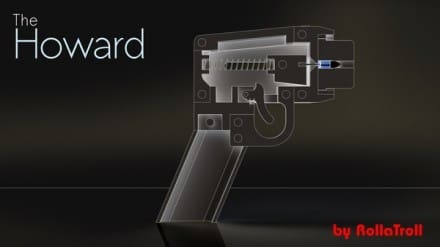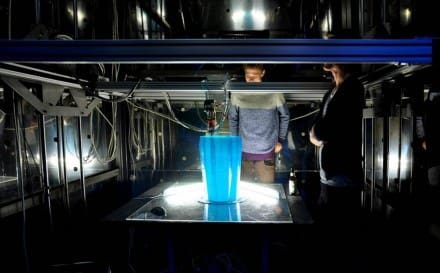There was a time, just a few months ago, where the main stream media was almost hysterical over the possible threat posed by these home made firearms that can be more difficult to detect due to their polymer construction. Patterns for 3D printed firearms continue to roll out at a regular pace. For example, plans for the 9×19mm Parabellum Howard Pistol (after ex Australian PM, John Howard) by RollaTroll were recently released on the 3D CAD file sharing site, DEFCAD.
But as 3D printing becomes more and more mainstream, will it be “too late” for lawmaking bodies to control this intellectual frontier? Just this past summer, designers created a 3D printed house in Amsterdam.
Internet ethicists continue to ponder whether 3D printers will become so commonplace that the genie can’t be stuffed back in the bottle or, whether the roll out will be throttled as means are developed to control the technology. And, we consider how will intellectual property laws affect their deployment into the marketplace? In the end, this may be the ultimate threat to widespread use of this phenomenon that shifts manufacturing to small workshops and eventually into the home. Although, the moral dilemma remains. Not only could printers pump out illicit goods but also counterfeit versions of patented technologies. Based on what we’ve seen regarding recorded music and film, could hardgood manufacturers be far behind as their market transforms before their eyes?




Most of the recent 3D printing wave is a result of open source. So basically stuffing the genie back is pretty much impossible. The source code and blueprints for basic 3D printers are probably downloaded WORLDWIDE. You build them with everyday stuff.
With current ABS and PLA printers, a proper counterfeit is hard to get anything close to accurate due to the way the printers print (“hot glue gun with a programmed pattern building layers” pretty much describes it).
The thing holding people back is the lack of 3D skills (CAD etc.). That’s a lot harder to acquire than pressing “buy now” on an online site. But there are always people willing to make 3D models of whatever you want.
Will there be pirate “hardware”, yes. Same scale/impacts as media? Don’t think so.
Actually, some products can be affected much more than others and it’s easy to name it – branded stuff made of plastic with no special mechanic properties. Toy companies should think about it, while gun makers have nothing to worry about.
But, people, discussing the future of home 3D printing, just can’t remember another cool modern stuff – laser cutting and engraving. Having the 3D-moving platform, it’s possible to set there not only “glue gun”, but also some low power laser cutter (for thin sheet materials) and photopolymerization device. These three technologies, used together, could significantly widen the spectrum of products available for such type of production.
Here we have a smart cow problem. You don’t have to have everyone smart enough to create 3d models to counterfeit, just one person who shares. You see this with encrypted bluray movies where one person breaks the encryption than shares the goods. Once you have a design that counterfeits well enough the whole world can just press print. This day isn’t here yet, but at this point it’s a question of when.
A company has just printed the world’s first 3D METAL pistol, a 1911 no less. Yeah, I’d say the genie has left the building.
http://co-ironwill.blogspot.com/2013/11/worlds-first-3d-printed-metal-gun.html